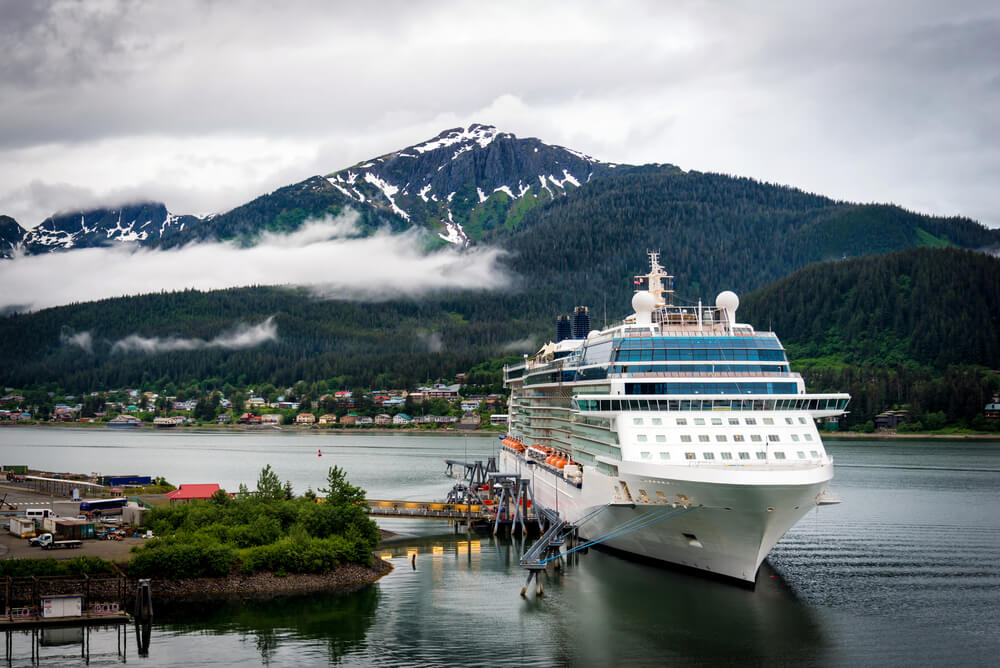

Learning proper cruise terminology before your cruise can help ensure you optimize your cruising activities.
Are you planning an Alaska cruise soon? There is some cruise terminology that you should learn before you go. Understanding cruise ship lingo will you enjoy your Alaska vacation all the more.
We’ve put together a glossary of cruise terminology that will apply to an Alaska cruise and some terms will also be helpful in other cruise destinations as well. We want our clients to be well informed when it comes to unique cruise terminology.
Cruise Ship Lingo
Print out this article and keep it in your luggage to refer to when needed. Although most of the terms refer to an Alaska cruise
• Arctic Circle – The Arctic Circle is one of the five major circles of latitude that mark maps of the Earth. It encircles the top of Canada, Alaska, Russia, Greenland, Norway, Sweden, Finland, and Iceland and includes the ice-covered Arctic Ocean. Each year the sun is above the horizon for 24 straight hours (Arctic Summer Solstice) and below the horizon for another 24 hours (Arctic Winter Solstice).
• Calving – When enormous chunks of ice break off from a glacier, it’s called calving or white thunder. The chunks are icebergs. One iceberg is as big as the state of Rhode Island, however, not all are that large. You can learn about an iceberg from its color. White has lots of bubbles inside, blue is very dense, greenish-black may be from a glacier bottom, and darkly-striped carry debris from the glacier.
• Cruise First, Land First, Northbound, Southbound – There are options when taking a cruise tour. Cruise First is when you take the cruise first followed by the land portion. Land First means the land portion of the vacation comes first and is followed by the cruise. Northbound cruises originate in the U.S. or Vancouver and sail one way north to Anchorage or Seward. Southbound refers to cruises departing from Anchorage or Seward and traveling south to Vancouver or U.S. ports.
• Cruisetour (cruise + land or land + cruise) – Cruisetours are very popular combination vacation packages. A portion of your vacation is a cruise, and the other portion allows you more time on land to explore destinations.
• Fjord – A fjord is a long and narrow by bordered by steep cliffs. Glacier erosion is believed to be responsible for their formation.
• Flightsee – You might want to take a flightsee which is a tour on a small plane or helicopter. These flights allow passengers to see vast areas of mountain ranges, glaciers, and wilderness.
• Floatplane/Seaplane – These two planes are the same and have floats allowing them to take off and land on water. Most flightsee planes fall into this category.
• Glacier – Glaciers are slow-moving rivers of ice that accumulate from the compaction of snow on mountains. They may move only inches or feet per year.
• Glass-Domed Traincar – These double-decker train cars have panoramic domed windows on the upper level and a dining room and open-air viewing platform. Each cruise line operates their own train cars.
• Tour Guide – Expert tour guides, such as provided by Princess Cruises, can answer all your Alaska questions.
• Guided Tours – A guided tour is when a group of travelers chooses to take a tour with their own guide. The group remains together until the tour is completed.
• Wrangell-St. EliasHeli-Hiking – Your exciting hike experience begins when your helicopter transportation drops you off at a remote hiking area. It will return later to pick you up.
• Iditarod Dogs – These dogs are the huskies that compete in the Iditarod race in March of each year. Starting in downtown Anchorage, the race runs for 1,049 miles. The Iditarod dogs train year-round and can be visited during cruise season.
• Inside Passage – The Inside Passage is a coastal route for oceangoing vessels along with a network of passages that weave through the islands on the Pacific coast of North America. Alaska’s portion extends 500 miles from north to south and 100 miles from east to west and runs from Seattle WA to Alaska, passing through islands in Washington, British Columbia, and southeastern Alaska. The Alaska Inside Passage runs between Ketchikan and Skagway with 1500 miles of shoreline and thousands of islands, coves, and bays.
• Klondike Gold Rush Country – In the three years between 1896 and 1899 over 100,000 prospectors migrated to the Klondike region of the Yukon. It was a hard journey to the remote area and somewhere between 30,000 and 40,000 finally arrived. Four thousand of them struck gold. Dawson City was the largest of the boomtowns, but once the gold was mined out, the town was abandoned and moved on to Nome when gold was discovered there.




